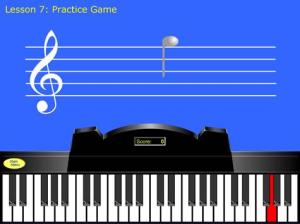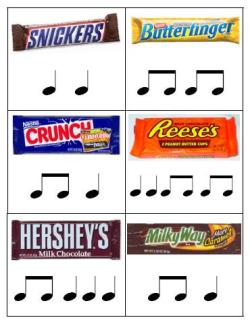There are so many wonderful computer programs to use with music students, but this one is by far my favorite. Piano is Fun is a program that teaches note reading, and it really is fun! The program is only $29.95 and worth every penny, in my humble opinion.
There are 20 lessons in this game, and notes are gradually introduced. Students first itentify the notes by letter name, then do so on the keyboard as in the picture above. After the lessons have been finished, students then progress to the Bronze, Silver, and Gold medals. In these challenges, the notes go by, and the screen flips randomly from the keyboard to letter names. The Bronze and Silver medals are pretty easy to get, but the Gold medal is pretty hard. I can do it, but I have to concentrate! I am more than satisfied when my students earn the Silver medal. If they do get the Gold, I give them a gift certificate to their favorite restraunt.
You can go to the Piano is Fun website to see a video of the game in action, and to download the game.
This is such an effective tool that I will have students take 5 minutes out of their lesson to complete a level. I don’t do it all the time, but it is a regular part of my note reading arsenol of activities. It also works well for siblings who are waiting for their turn. I don’ t have a computer lab or anything like that yet. Students simply play this one game on my laptop in the piano studio.
Filed under: Note Reading, Technology | 13 Comments »



 Candy Bar Rhythms
Candy Bar Rhythms